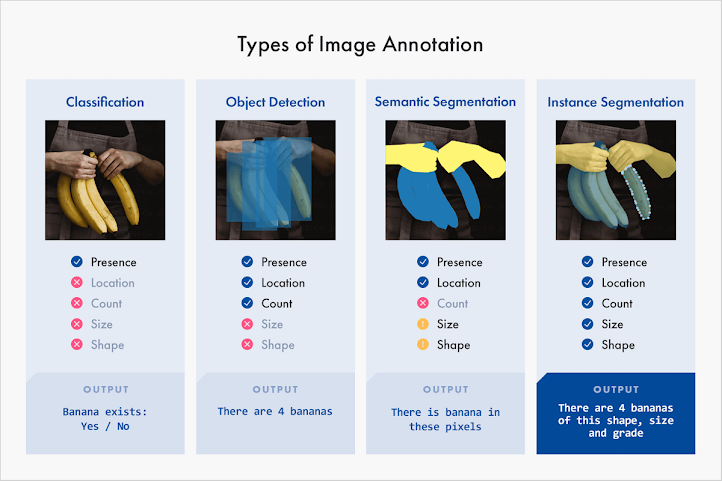From Text to Images: The Diverse Landscape of Data Annotation
Introduction
In the ever-evolving world of artificial intelligence and machine learning, data annotation stands as a pivotal process, bridging the gap between raw data and intelligent algorithms. This critical task, which involves labeling or categorizing raw data, makes it understandable and usable for AI models. The landscape of data annotation is rich and varied, extending from text to Image Annotation Services, each with its own set of challenges and techniques. In this comprehensive exploration, we delve into the multifaceted world of data annotation, illustrating its vital role in advancing AI technologies.
The Essence of Data Annotation
Data annotation, at its core, is the process of attaching labels to data to make it interpretable by AI algorithms. These labels can range from simple tags identifying objects in images to complex annotations explaining the sentiment behind a piece of text. The goal is to create a dataset that an AI model can learn from, ensuring the model understands patterns and correlations in real-world data.
Text Annotation: The Backbone of Natural Language Processing
In the realm of natural language processing (NLP), text annotation is indispensable. It involves labeling parts of speech, sentiment analysis, and entity recognition in textual data. This meticulous process enables AI models to understand and generate human language, paving the way for applications like chatbots, sentiment analysis tools, and automated content generation.
Challenges in Text Annotation: The major challenge lies in the nuances of human language, including idioms, sarcasm, and contextual meanings. Annotators must have a deep understanding of linguistic subtleties to accurately label text data.
Image Annotation: The Visual Dimension of AI
Moving from Text Data Collection to images, annotation takes a more visual turn. Image annotation involves identifying and labeling objects within images, aiding in the development of computer vision technologies. From bounding boxes to more complex polygonal annotations, this process is crucial for applications like facial recognition, autonomous vehicles, and medical imaging.
Challenges in Image Annotation: The primary challenge here is the need for precision. Inaccurate annotations can lead to significant errors in applications, especially in critical areas like healthcare or autonomous driving. Additionally, the complexity of real-world scenes adds to the annotators' workload.
Diverse Techniques in Data Annotation
Data annotation is not a one-size-fits-all process. Different types of data require different annotation techniques:
- Bounding Boxes: Widely used in object detection, bounding boxes involve drawing rectangles around objects in images.
- Semantic Segmentation: This involves labeling each pixel of an image to categorize it into a predefined class, crucial for detailed scene understanding.
- 3D Point Cloud Annotation: Essential in autonomous vehicle technology, this involves labeling 3D point cloud data to help machines understand and navigate real-world environments.
- Sentiment Analysis: In text annotation, this technique involves categorizing text according to the sentiment expressed, such as positive, negative, or neutral.
- Entity Annotation: This involves identifying and labeling entities like names, places, and organizations in text data.
The Impact of Quality in Data Annotation
The quality of data annotation directly impacts the performance of AI models. High-quality annotations lead to more accurate and reliable AI applications, while poor-quality annotations can lead to flawed outputs and misinterpretations. Ensuring quality involves meticulous review processes, guidelines, and often, the expertise of domain-specific annotators.
The Role of Human Annotators and Automation
The human element in data annotation cannot be overstated. Despite advances in automated annotation tools, human annotators play a crucial role, especially in handling complex or subjective tasks. Automation, however, is increasingly being used to handle more straightforward, repetitive annotation tasks, striking a balance between efficiency and accuracy.
Ethical Considerations in Data Annotation
Data annotation also raises ethical concerns, particularly regarding privacy and bias. Ensuring that annotators respect the privacy of data, especially in sensitive areas like healthcare or personal data, is paramount. Additionally, avoiding bias in annotations is critical to developing fair and unbiased AI systems.
Conclusion
The landscape of data annotation is as diverse as it is crucial in the realm of AI and machine learning. From understanding the nuances of human language in text annotation to deciphering the complexities of the visual world in image annotation, this field continues to challenge and inspire. As AI technologies advance, the role of data annotation in shaping these technologies becomes ever more significant, demanding a blend of precision, ethical considerations, and an understanding of the intricate nature of our world. In the end, data annotation is not just about labeling data; it's about building the foundation for intelligent systems that understand and interact with our world in meaningful ways.
Data Annotation Services With GTS Experts
Globose Technology Solutions stands as a pivotal player in the realm of data annotation services, providing essential tools and expertise that significantly enhance the quality and efficiency of AI model training. Their sophisticated AI-driven solutions streamline the annotation process, ensuring accuracy, consistency, and speed. By leveraging GTS.AI's advanced technologies and expert team, businesses and AI developers can overcome common challenges such as data volume management, quality control, and cost-effectiveness. This partnership not only optimizes the data annotation process but also paves the way for more advanced and reliable AI applications. The collaboration with GTS.AI is a strategic step towards harnessing the full potential of AI technologies in various industries, making data annotation more accessible, accurate, and ethically aligned with the evolving demands of the digital world.





Comments
Post a Comment